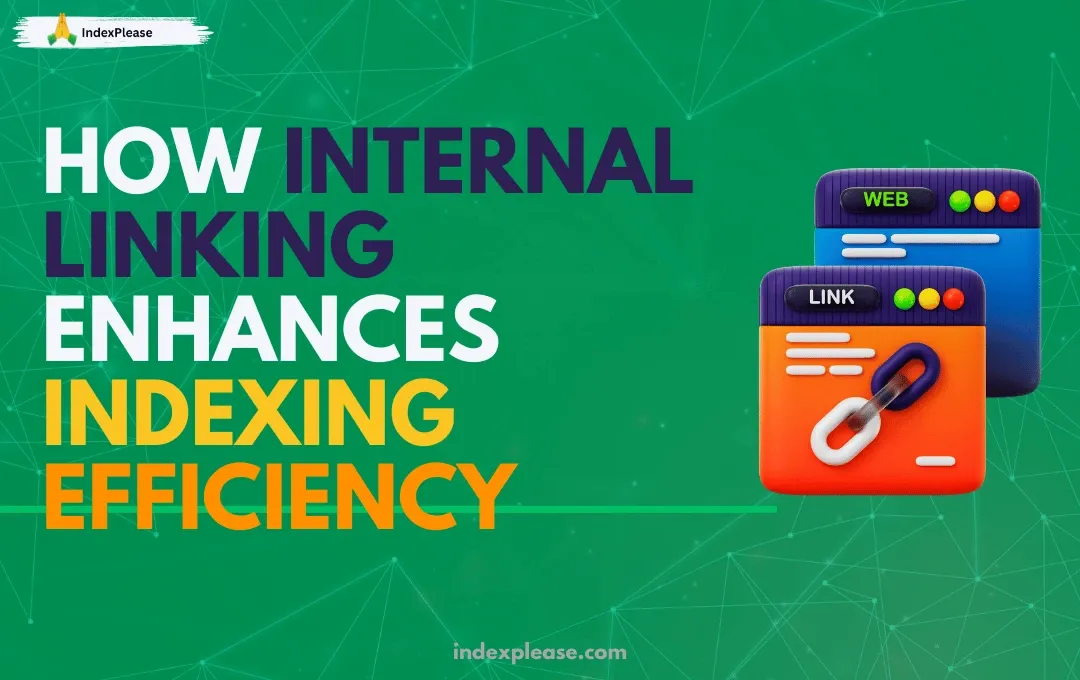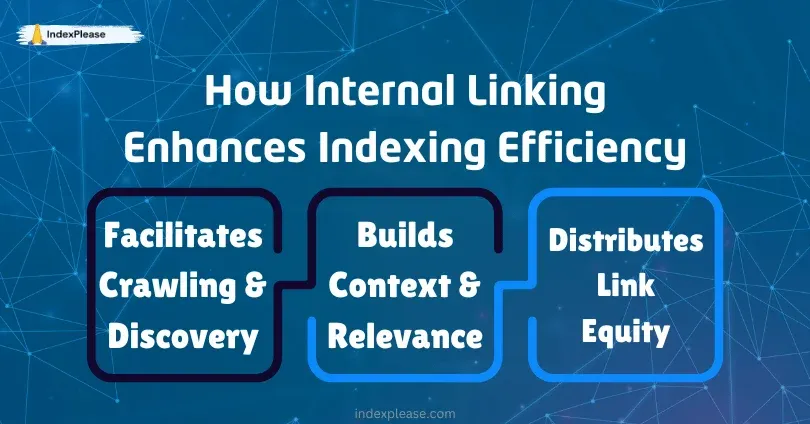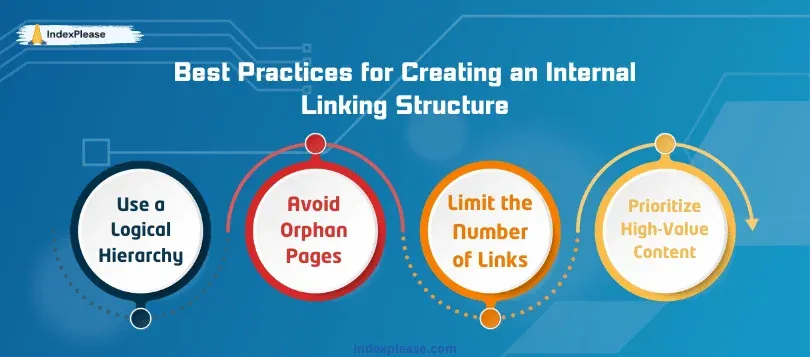
One important SEO strategy that is frequently disregarded is internal linking. Linking one page of your website to another is a technique that helps both visitors and search engines by building a network of connections. Internal links serve as a road map for search engines, and help crawlers find, comprehend, and effectively index your content. They facilitate better navigation for users by directing them to pertinent information.
A strong internal linking structure increases visibility, strengthens your site’s authority, and improves indexing performance. Even excellent content may be ignored if it is not properly linked. In this article, we’ll examine how internal linking functions, its effects on indexing, and how to use it most efficiently.
What is Internal Linking?

Internal linking is all about linking one page of your website to another. These links help crawlers and visitors navigate your website, find fresh content, and comprehend its context. Consider a library where every book has citations to other books. It would be difficult to locate relevant information without these. Internal links create a logical flow by functioning in the same manner.
When implemented correctly, internal linking guarantees that search engines fully scan and index your pages and improves user navigation. A carefully planned linking strategy will help you efficiently arrange your content and raise rankings.
How Internal Linking Enhances Indexing Efficiency

i) Facilitates Crawling and Discovery
Google and other search engines use bots (also known as spiders) to crawl websites. These bots find new content by clicking on links. Internal links guarantee that no page is left without a connection. Strong internal linking can direct a bot through the entire website once it reaches your homepage, ensuring that all significant pages are indexed.
For example, if you publish a new blog post but fail to link internally, search engines may take weeks or even months to discover it. You can reduce this time by connecting to an already-indexed website. This procedure ensures that new content appears in search results more quickly by speeding up your site’s overall indexing.
ii) Builds Context and Relevance
Internal links serve more than as guides for crawlers. They facilitate the connections between pages. For instance, when two blogs on “SEO tips” and “keyword research” are linked, it indicates how relevant they are to one another. This context helps search engines understand how your content fits together, increasing website authority.
Including keyword-rich anchor text in these links improves the relationship even more. If you regularly connect to relevant pages, search engines will view your website as an extensive resource, increasing your chances of ranking higher.
iii) Distributes Link Equity
Link equity, sometimes called “link juice,” is the value hyperlinks transfer between pages. Although external backlinks give your website authority, internal links control the distribution of that authority. Internal linking ensures that any substantial external links your pages acquire are shared with other website sections.
For instance, internal links allow a high-ranking homepage to share its link equity with deeper pages. This distribution increases overall indexing efficiency and makes less-visited pages more visible.
Best Practices for Creating an Internal Linking Structure

There is more to internal linking than merely distributing links across the website, it involves planning and accuracy. The following are some recommended practices:
i) Use a Logical Hierarchy
A logical hierarchy, with the homepage at the base and primary sections branching into subcategories, arranges your website like a hierarchical tree. This design is easy to navigate for both users and search engine crawlers. Clear paths between pages boost content discovery, increase indexing efficiency, and produce an engaging user experience.
ii) Avoid Orphan Pages
Orphan pages are not visible to users or search engine crawlers because they lack internal links. These pages lower your site’s SEO potential and make indexing more difficult. Find orphan pages on your website and link them to relevant data by doing a routine audit. This guarantees increased overall indexing efficiency, higher visibility, and improved navigation.
iii) Limit the Number of Links Per Page
Although internal links are important for search engine optimization, having too many links on a page might confuse users and search engines. According to Google’s recommendations, a page should have no more than 100 links. To guarantee a clear structure and improve your website’s indexing efficiency, prioritize linking to the most valuable and pertinent pages.
iv) Prioritize High-Value Content
Strategic internal links work well for high-value content, such as essential articles or high-performing product pages. Linking to these pages increases their authority and visibility and helps search engines recognize their importance. By directing users to the most important and pertinent sections of your website, this technique enhances indexing and improves user experience.
Using Anchor Texts Effectively in Internal Links
Anchor texts are words or phrases that can be clicked in a hyperlink. They contribute significantly to SEO and are more than just visual clues.

Be Descriptive but Concise
Anchor text should reflect the linked content for improved readability and search engine optimization. Rather than using general terms like “click here,” use more precise ones like “learn about internal linking.” This method improves the user experience overall and increases indexing efficiency by letting users know where the link leads and communicating significance to search engines. Results come from descriptive links.
Avoid Over-Optimization
Maintaining a natural flow in internal links requires avoiding over-optimization. Although keywords in anchor texts are mandatory, utilizing too many links can appear manipulative and result in penalties. Ensure your anchor texts are interesting, pertinent, and easy to use for the benefit of readers and search engines.
Diversify Anchor Texts
Anchor text diversification is essential for effective internal linking. Instead of using the same keywords, employ variations appropriate for the context. Link to the “SEO” guide, for example, using terms like “SEO tips,” “optimize your website,” or “search engine strategies.”
Link Deep
In contrast to top-level pages like the homepage, deep linking directs users and search engines to specialized, in-depth pages. It guarantees that valuable information is indexed, enhances crawlability, and distributes link equity fairly. Maintaining a balance between deep and broad links improves your internal linking approach.
How Internal Links Affect Crawl Depth and Indexing

Crawl depth is the number of clicks required to navigate from the homepage to a page. Deeply buried pages have a lower chance of being regularly crawled and indexed. By reducing the crawl depth, internal linking ensures that important content is easily accessible.
For example, if a product page is three clicks from the homepage, linking in with a blog article minimizes crawl depth. This small adjustment raises ranks and quicker indexing.
Crawl budgets are pages search engines crawl on your site during a certain period. Increasing crawl depth through internal links can optimize your crawl budget and ensure that crucial pages are indexed.
Optimizing Site Navigation for Better Indexing Through Links
Internal linking and a well-structured website go hand in hand. When combined, they give users and search engines a smooth experience.

i) Implement Breadcrumbs
Breadcrumbs are navigational elements that indicate where a user is on a website. They improve internal linking by establishing a logical route from the home page to particular pages. This format enhances user experience and facilitates effective content indexation.
ii) Leverage Footer Links
Footer links are a great method to offer internal navigation to significant blog posts, terms, and contact details. They improve indexing by making these pages easily available to search engines, increasing visibility and crawl efficiency.
iii) Create a Sitemap
An XML sitemap is an organized list of website pages that makes it easier for search engines to index and crawl them. Using Indexplease allows you to submit an updated sitemap and helps index your website faster. Although it doesn’t replace internal linking, it improves internal linking by providing a clear overview of your website’s structure.
iv) Use Categories and Tags Wisely
Effective use of tags and categories enhances internal linking and helps you manage website content. While tags draw attention to particular subjects, categories organize related content. This structure makes it simpler for consumers and search engines to explore and index your website.
Conclusion
Internal linking is a powerful way to improve indexing efficiency and website SEO. Indexplease can speed up the crawling and indexing of your content. Construct logical paths, effectively use anchor texts, and optimize navigation for enhanced user experience and increased website visibility.
Remember that internal linking is a continuous process. Regular audits and modifications maintain a strong structure. Your website may rank better, draw more users, and establish itself as an authority in your niche with well-chosen internal links.
FAQs
- What is internal linking and why is it important for indexing?
Internal linking is the process of connecting two pages on your website. It’s important for indexing since it allows search engine crawlers to easily identify and index content, increasing your site’s visibility and ranks.
- How does internal linking affect crawl depth?
Internal linking reduces crawl depth by making key pages more accessible. If a page requires fewer clicks to reach it, it has more chances to be crawled and indexed by search engines.
- How to improve the internal linking structure?
For an improved internal linking structure, use a logical hierarchy, remove orphan pages, keep minimum links on each page, and prioritize linking to high-value content.
- How to effectively use anchor text in internal links?
Anchor text should be concise, descriptive, and linked to relevant content. Avoid over-optimization and employ a variety of anchor text to preserve a natural flow and improve search engine understanding.
- Why are the categories and tags important in internal linking?
Categories and tags arrange content into groups, creating more internal linking opportunities. They facilitate site navigation and indexation for both users and search engines.